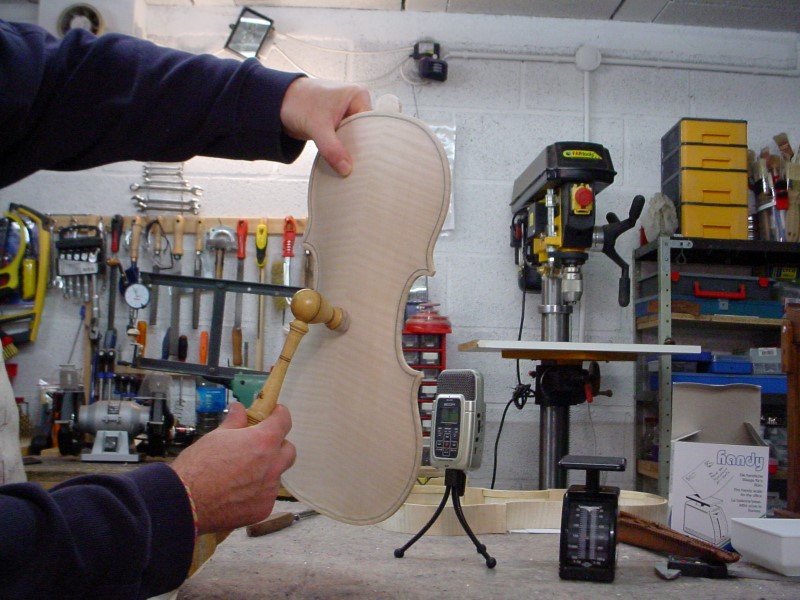Hello,
A luthier specific tool today :
This is a tap tuning hammer.
Luthiers like to hear the wood sound, especially the belly or back of instruments.
There are lots of different approaches around tap tuning, but at least one thing is sure, plate reaction to a solicitation is directly dependent on the stiffness of the wood itself, the thickness, the geometry ...
Knowing exactly what should be the exact tap tone spectrum on a stand alone plate like that is very difficult, but actually, the tone can be kept as a reference, for your archive. When the instrument will be finished , you will know really how is its tone and voice, and as you have kept track of it, you will know what is the corresponding tone you had for that on each plate, and it will be useful when you will be building another one.
For producing a tap tone, you want to trigger the self resonance of the wood, but you don't want to hurt too much the wood. Here the resonance will not be self sustaining like when you use a bow, and it will last only a fraction of a second. You want to hear it and not the sound of the hammer hitting the wood.
So the best way to achieve that is to do like for piano hammers, that is to say to have a good layer of felt to absorb the chock and just solicite the wood so that it will start vibrating by itself.
The sound is then recorded with a good digital recorder, and I can analyze the spectrum afterwards on my PC (with Audacity).
So that hammer has a special shape. It is quite heavy, made of boxwood, with the weigh located at the head, and it has a round shape at the bottom of the foot, just to get a good circular motion when you tap, lightly holding it in your hand.




 LinkBack URL
LinkBack URL About LinkBacks
About LinkBacks



 Reply With Quote
Reply With Quote


Bookmarks